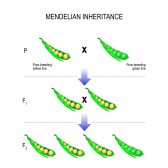Definition
noun
A filarial species of the superfamily Filarioidea; the causative agent of Loa loa filariasis
Supplement
Loa loa is a filarial belonging to the superfamily Filarioidea. It is common in Africa and India. The male adult worms are typically between 20 mm and 34 mm long whereas the female adult worms are between 20 mm and 70 mm in length. The species is one of the three most common types of filarial species that cause human subcutaneous filariasis. Subcutaneous filariasis is a form of filariasis wherein the parasitic worms occupy the subcutaneous layer of the skin. The other two filarial worms include the Mansonella streptocerca and Onchocerca volvulus.
Loa loa makes use of a vector fly (e.g. Chrysops species) as an intermediate host. These insects transmit the worm to a definitive host, i.e. humans, through insect bite. The life cycle of Loa loa begins when gravid females produce microfilariae. These microfilariae are ingested by the intermediate host when it bites an infected human host. The microfilariae develop within the insect host. The third larval stage is the infective stage. The larvae travel to the proboscis so that they would be transmitted to a human host via an insect bite. The larvae develop into adult worms inside the human host, particularly on the subcutaneous layer of the skin.
This worm is also commonly known as the eye worm. That is because it can travel through and infect the eye.
Scientific classification:
- Kingdom: Animalia
- Phylum: Nematoda
- Class: Chromadorea
- Order: Spirurida
- Superfamily: Filarioidea
- Family: Onchocercidae
- Genus: Loa
- Species: L. loa
Common name:
See also:
- Filarioidea
- filarial
- filariasis
Related term(s):







